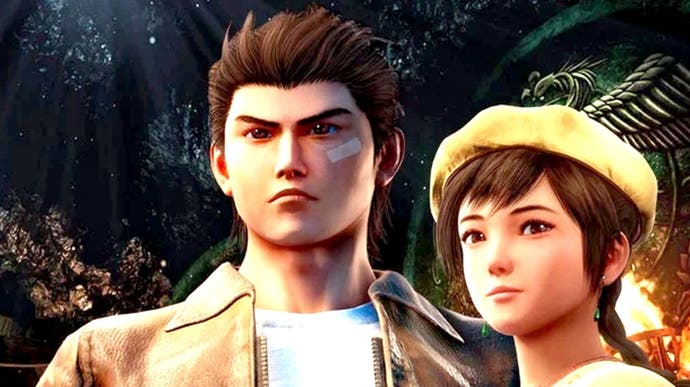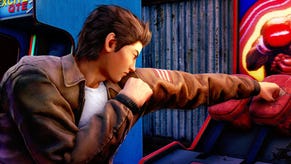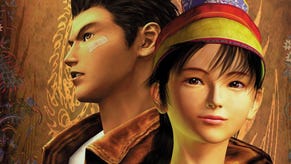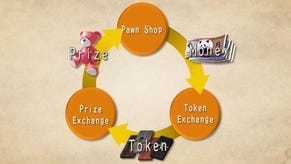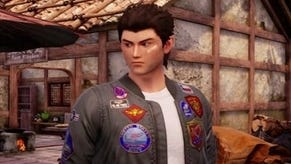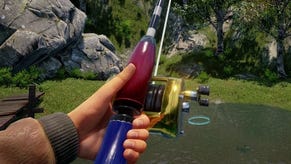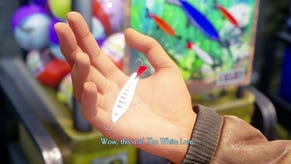Shenmue 3: a classic gaming experience re-interpreted by today's tech
It's a miracle that it exists at all - but does this sequel actually work?
At Digital Foundry we've talked about 'impossible ports' before - games like Doom 2016 and The Witcher 3 on Switch that seem to deny technological limitations and still bring the essence of the original experiences to a new audience. Shenmue 3 is something very different, but equally as unlikely. It's an impossible sequel, a game that shouldn't really exist owing to a whole host of reasons, but somehow here it is. It's a miracle that I'm now playing a modern sequel to a game that came out 18 years ago, a game that was - by all financial criteria - a major flop. Its sheer being is something to be treasured, but fundamentally, is it actually a good game and a worthy sequel? I'd say that the results are mixed. This is Shenmue viewed through a modern lens, which is absolutely fine. However, it's also a sequel produced very much as an indie production with limitations that impact the scope of the project, and by extension, how refined the game actually is.
A lot has changed since the original Shenmue was released. Its announcement and subsequent arrival on Dreamcast were quite an event - the culmination of everything Sega-AM2 had learned throughout its storied history. It was one of the most expensive games ever produced at time of its release - a truly lavish production built on a proprietary engine designed for cutting-edge console technology.
Almost two decades later, the world in which Shenmue 3 has released is a very different place indeed. With a presumably smaller budget and fewer resources, Ys Net has selected to utilise third party technology in the form of Unreal Engine 4 to produce the game for multiple, established platforms - a night and day shift from Shenmue's origins. From triple-A blockbuster with a ginormous budge to indie development, Shenmue has changed, Suzuki has changed - and today's games industry is a very, very different place.
The multi-platform side of the equation is where I feel Shenmue 3 does actually disappoint. All pre-launch marketing and demos have been on PC and the launch was actually our first chance to look at the game running on PlayStation 4 consoles. Resolution is lower than expected at 864p on the base console and 1080p on PS4 Pro, but still looking fine overall thanks to Unreal Engine 4's excellent temporal anti-aliasing solution. However, both console versions run with an unlocked frame-rate that delivers a stuttering, highly variable experience.
Shenmue 3 runs north of 30 frames per second at least, but a frame-rate cap should be an option here - at the very least, it would bring the experience into line with the original titles. As things stand, running unlocked doesn't really work for me. PS4 Pro has a five to 10fps advantage over the base unit, but the experience doesn't feel right for me on either system. For this reason alone, I'd take the PC version. Beyond resolution and frame-rate, PS4 and Pro deliver the exact same visual experience - clearly a set target for Ys Net as this graphical experience is entirely consistent with the PC version on its very high setting. This is all fairly typical of a third party UE4 title, so it's not entirely surprising but still, I had hoped for more.
Of course, the PC version has some available adjustments but the options menu isn't great - selecting full-screen resolutions, for instance, requires you to manually flip through each one with your display changing resolution every time you move to the next. The interface is also very much gamepad driven - using a mouse and keyboard results in some odd key assignments and other weirdness. There are only four detail options available - low, medium, high and very high. The PS4 version uses very high and for good reason - settings below this have a dramatic impact on visual quality. Low in particular is rather unattractive.
Even at the top-end settings, Shenmue 3's visuals are rather interesting in that it feels like a mishmash of modern rendering technology colliding with older sensibilities. To be fair, Shenmue 3 is a stunning game at times. Utilising Unreal's advanced lighting and materials capabilities, much of the game looks surprisingly realistic and striking.
You'll spend time in both the city and around a rural village in the mountains. The village features lush greenery and vibrant flowers resembling the canola flower fields in certain regions of China. The original games existed before foliage was possible in a large volume such as this, so the lush vegetation in Shenmue 3 does lend the game a very different appearance than the Dreamcast titles. There's no doubt that the village is a beautiful environment, but I feel the city that follows is more striking. Buildings are carefully crafted and full of detail - the Chinese architecture is often beautiful to behold. Screen-space reflections are featured in many scenes, lending the game a more striking appearance.

Lighting plays a huge role in defining the look of the game and Shenmue 3 features a fully dynamic time of day progression system. The atmosphere varies greatly based on this - going out at night is a very different experience than walking around during the day. The sky itself is very dynamic with wind and cloud cover varying per day. There's also dynamic weather too - the ground even becomes wet and muddy following a rainstorm.
Beyond this, the texture work itself is impressive. It's sometimes uneven but there is a fair amount of detail if you look closely. Many surfaces even make use of parallax occlusion maps to great effect, lending scenes additional depth. But a large part of the Shenmue experience is based around its interiors - and there's plenty to explore here in this new sequel, with lavish amounts of detail dedicated even to incidental items. Unfortunately, there is also a lot of repetition - especially early on - but this was also true of some areas in Shenmue 2 so perhaps it can be forgiven. The layout and design feels as Shenmue should but at the same time, the lower budget is certainly evident in many areas where the game lacks the handcrafted feel of the original Dreamcast titles, resulting in an uneven look to the entire game when taken as a whole, but I still feel they've done a respectable job given the huge constraints the development team faced.
The thing is, the more you play, the more obvious those constraints become and a lot of the elements in the game feel somewhat unpolished. The most obvious is the way in which cutscenes are handled. The game regularly uses a fade to black transition within a normal scene and it feels awkward. Cutscene direction in general lacks the flair of the Dreamcast originals and there aren't enough of them, I feel. That said, when the cutscenes are ramped up, the quality is still very good. The introduction, for instance, is well directed and looks great.
Character detail is also generally fairly good - but again, quite inconsistent. Main characters such as Ryo and Shenhua look great - with huge strides made since the original Kickstarter reveal. I feel they compare favorably to the Dreamcast models as well - a design that feels like a continuation of earlier AM2 games. But even here, there are aspects that lack refinement which once pointed out, you cannot unsee. For example, the way Ryo's arms clip through his jacket is distracting - and it's on-screen at nearly all times. His coat simply appears somewhat overly puffed up in a way that it did not in the original games.

Secondly, the placement of the camera behind Ryo and the selected field of view just don't feel quite right to me, especially when running. I'd like to see the camera pulled back a touch so that Ryo's full body is visible. At least on PC, field of view tweaks can improve matters here. At least the controls themselves are modernised - the grid-like movement of the original game is replaced with a more natural movement system and the map offers increased freedom in terms of where players can walk. The addition of a proper right stick camera also helps navigation.
Where I feel Shenmue 3 is a step back, however, is in its battle system. Fights pop up throughout the adventure as a way to gate progress, so to speak, but unlike the original game, this new battle system feels very simplistic - more of a button mashing exercise than a refined fighting game. The original Shenmue shares elements with the Virtua Fighter series, but Shenmue 3 loses this association somewhat. It still works well enough, I suppose, but it's not quite what it could be.
I'd say that the more I've played Shenmue 3, the more conflicted I become about it with my feelings swinging back and forth. There are moments when it perfectly captures the essence of the original games and I cherish those moments - but then, you'll encounter unexpected rough edges or some other area of design that falls short and then there's the undoubted sense that the game loses something.
Still, when it works, it works well. This is a smaller scale adventure than Shenmue 2 - it's much more intimate like the original and I appreciate that. I'm so connected to the original games that coming to this sequel is both a joy and a disappointment. I love the fact that a new Shenmue exists - totally against the odds, of course. But at the same time, the constraints on development impact on the experience in a way that we never had to contend with on the original games. Ultimately, I feel that Shenmue fans need to go into this one appreciating what has been achieved, while understanding that it is an indie endeavour with the resources and budget to match.
So where do we go from here? Well, this projected has kickstarted Yu Suzuki back into action and hopefully, what the development team has learned along the way can lead to bigger and better things. Perhaps Shenmue will continue or maybe something else is waiting for us - something not quite as burdened with expectation as a sequel to one of gaming's all-time classics. Regardless, in the here and now - and even with all of its flaws - I do still recommend Shenmue 3 if you're invested in the series as I am. Just the fact that we're able to experience the game at all is a minor miracle, and one that I'll always appreciate.
